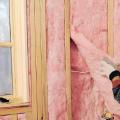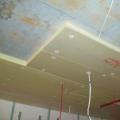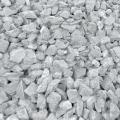Japanese foam house
The classical understanding of materials for the construction of residential buildings is gradually being eroded and modified; until recently, windows made from PVC profiles caused serious concern and mistrust; today, fundamentally new construction solutions have already appeared for the construction of an ordinary one-story residential building. These are Japanese houses made of polystyrene foam. More precisely, from extruded polystyrene foam with a density of 30 kg/m 3, which is well known in the construction industry as one of the most effective materials for thermal insulation of walls.
What is a foam plastic house?
Relatively recently, just five years ago, the Japanese construction company Japan Dome House Co proposed and began production of a private one-story house with a fundamentally new design and execution. The building was a dome or hemisphere with walls made of polystyrene foam reinforced by mechanical processing. In addition to numerous technical and technological advantages, the new Japanese house looked like a real building from the future, quite stylish and spacious.
A polystyrene foam house is distinguished by an absolutely innovative approach to organizing housing construction:
- The building was not built in the old classical sense of the word, its walls were assembled from component parts, ready-made door and window blocks, which means that construction costs were record low;
- The frame and walls of the house were made of the same material - polystyrene foam, and were assembled, literally, like a children's construction set, from industrially stamped ready-made sectors;
- Due to their shape and light weight of the walls, dome houses did not require a frame or a rigid foundation; the building could be installed on a prepared round platform made of sip panels or OSB boards.
For your information! As a result, the Japanese house made of polystyrene foam turned out to be spacious, warm and very cheap, even by our standards. The cost of one set of domed house with a base diameter of 8 m, a ceiling height of 4 m and a wall thickness of 10 cm was announced at $3,500.

Features of a Japanese house made of polystyrene foam
The first thing that catches your eye when you get acquainted with the design of the house is the relatively small thickness of the walls of the building. The manufacturing technology provides for a wall thickness with laid outer and inner covering from 100 to 190 mm. The manufacturer believes that given the shape of the house, this wall thickness is enough to withstand a wind force of 25 m/s and any thickness of snow cover.

Walls or segments of a house are produced in industrial furnaces and presses in the form of finished units. The site for the building is leveled in advance and fixed to the ground using a light pile foundation.

If the terrain is complex, has slopes and fluid soil, Japanese experts recommend making a circular shallow foundation. But in the classic version, a Japanese domed house can generally be located on rocky rocks in the mountains or in wetlands, without any modification of the walls and shape of the building.

In addition, under the influence of solar radiation, the foam plastic of a Japanese house intensively crumbles and collapses. Therefore, for protection, it is recommended to apply a thick, up to 5-10 mm, layer of decorative plaster or other protective coating that absorbs ultraviolet radiation. Metallized coating based on aluminum is recognized as the most effective.
Alternative material for a Japanese home
The Japanese technology for building a domed house was quickly picked up in Europe, with a slight improvement in the material for its construction. Today, it is often proposed to build a Japanese dome house not from pure extruded foam plastic, but from polystyrene concrete. The Japanese domed house has become much heavier and more massive; now its construction requires, at a minimum, a shallow foundation and drainage devices.

The house has retained its excellent thermal insulation and strength, but the high specific gravity of polystyrene concrete, reaching 200 kg/m 3, has changed the house assembly technology. In the classic version, the 1/8 segment of the dome of a Japanese house was freely lifted and installed by only two people. Now, to perform such work, you need a crane and a special vehicle for transporting large blocks. It cannot be said that the design of a Japanese house in a new technological solution has lost its attractiveness, but it has become significantly more expensive.

Positive changes include an increase in the strength of the walls and the possibility of forming domes with a high ceiling height, up to 5-6 m. In addition, the polystyrene concrete version of the Japanese house is more suitable as permanent buildings for garages, warehouses, hangars, and parking lots due to the greater strength of the walls , which means greater resistance to burglary and intruders entering the building.


Such houses can be used to create temporary housing for any purpose, and the level of comfort will ensure long-term living in domed Japanese towns.
 Construction materials and list of works
Construction materials and list of works Proper insulation of a wooden ceiling in a private house
Proper insulation of a wooden ceiling in a private house What types of crushed stone are there?
What types of crushed stone are there?